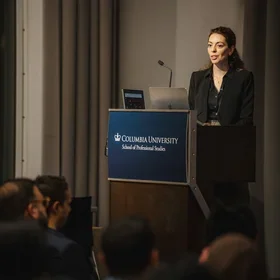The new year prompts businesses to audit the past year’s performance and implement changes for the year ahead.
It’s also the perfect time to assess how an organization is supporting its employees to grow, and I recommend folding learning programs into overall corporate strategy.
I’m excited to begin my class this winter on just that. “Organizational Strategy and Learning” is a seminar that explores the intersection of strategy, operational planning, and human capital development.
In my book, Learning to Succeed: Rethinking Corporate Education in a World of Unrelenting Change, I introduce the CILS model for corporations, which stands for Continuous Integration of Learning and Strategy. A case study from the book serves as a nice teaser to the class, as well as for anyone interested in examples of organizational strategy in action.
Here’s an excerpt, outlining how Comcast’s leadership challenged itself to improve operational efficiencies and customer service after feeling the pressures of the financial crisis. The solution? Centralize its learning and development (L&D) program, which, in effect, would iron out inefficiencies and enhance customer service training.
The inaugural operational activity of the newly structured Comcast University was a company-wide audit. The first assessment uncovered more than 25,000 learning objects and courses across the company. Subsequent structuring and alignment allowed for organization of activities, reduction in redundancies, and an improved process for reporting on how much learning is taking place, how much it is costing the company, and where to allocate available resources for new support.
The inaugural program activity of the newly structured Comcast University was the first high-potential development program for hourly employees. Immediately, the program resulted in 90 percent retention of a critical population and prompted a 65 percent promotion rate in some markets.
Five years after the strategic shift, Comcast University operates as one of the top functions in the world, focusing on leadership development, learning solutions, and talent management.
Comcast identified that the strategic changes needed were tied hand-in-hand with a need for new learning programs. The company’s COO collaborated with the CLO from the start. Because of the thoroughly realized value of the changes they needed, Comcast saw active participation from senior leaders across the board--and the resulting efforts enjoyed historically high top-down support.
This is just one example of a corporation taking a strategic approach to the problem of organizational learning. I look forward to exploring this and other examples of corporations tackling the issue of learning in my course with the best speakers on the subject.
Jason Wingard,
School of Professional Studies


